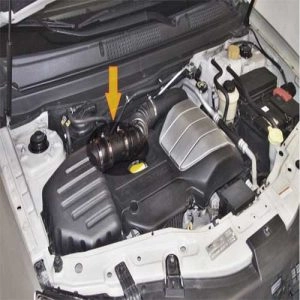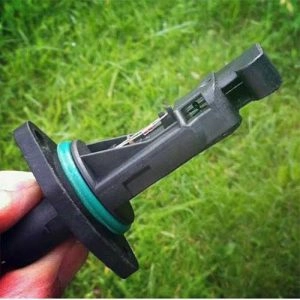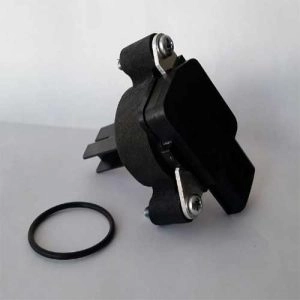The air sensor, also known as the Mass Air Flow (MAF) Sensor, is used to detect air flow and determine the rate of air mass entering the internal combustion engine. This information is used by sending it to the car's computer, which determines the appropriate amount of fuel to supply to the engine.
It's important to note that air density changes with alterations in temperature and ambient pressure. Therefore, mass flow sensors are more accurate in determining the appropriate amount of air required for each cylinder in the engine, compared to volumetric flow sensors.
The car's computer monitors air information coming from the MAF sensor to determine the appropriate air mass flow rate, and it does this without needing to use any technology that measures the air mass directly.
How does an airflow sensor work?

Within the airflow sensor, there is a small wire that can be electrically heated. This wire measures the temperature of the air. If the car's engine is idle, some air circulates around it. The operation of the air sensor can be summarized as follows:
When the driver presses on the gas pedal, the throttle valve opens, which leads to a larger mass of air flowing into the heated wire.
The flowing air cools the heated wire, which causes more electrical current to be consumed to continue heating the wire. The more the amount of flowing air increases, the more the need for electrical current increases.
There is a small electronic chip within the sensor that works to convert electrical current into electronic signals, and sends them to the car's computer.
The car's computer analyzes and monitors this data, calculating the amount of fuel that needs to be injected into the engine, which helps maintain an ideal ratio of air and fuel in the car.
The computer also benefits from this information in determining the appropriate gear shifts in the transmission. Therefore, damage to the air sensor is considered a cause of failures and problems in the transmission gear shifts.
Also read:There are 5 different types of car brakes.
Signs of Air Sensor Damage

The air sensor often fails to perform its duties due to its age or the impact of external factors such as pollutants, dust, and dirt. In addition, an increase in the electrical load from the car's battery might cause damage to the electronic circuits within the sensor, rendering it unable to transmit data to the car's electronic control unit. At that point, the car's computer considers whether the air flow sensor has been damaged and thus become unusable or not.
When any error occurs in the sensor and the computer senses it, it will alert you by lighting up the engine light on the dashboard. We will now explain the main signs that occur when the air sensor is damaged.
Firstly: The appearance of the engine light:As we mentioned, the most common symptom of an air sensor failure is the illumination of the engine light on the dashboard, which indicates a problem with the sensor and the engine. However, there is always something we talk about and it's important, which is that the engine light can be triggered by several issues in the car. So, the light might be on but this does not necessarily mean that the air sensor is damaged. In this case, the car should be examined by a professional technician to diagnose the problem and work on solving it.
Secondly: Weakness in the car's torque:When the MAF air sensor is damaged, it leads to acceleration issues at higher speeds. If there is any delay when pressing on the gas pedal to increase acceleration, it is due to insufficient fuel reaching the engine. The faulty sensor also causes problems with the air-fuel mixture, leading to a decline in engine performance.

Thirdly: The Examination of the Car:When the engine draws in a large amount of air, but the corresponding amount of fuel is less, it results in improper fuel combustion. This leads to engine idleness and vibration when the car stops. When the sensor gets dirty and polluted, you will notice rapid fluctuations in engine RPM on the dashboard when stationary.
Fourthly: Increased gasoline consumption:The airflow sensor measures the amount of air flowing into the engine continuously, which helps determine the appropriate amount of fuel needed to burn. When the sensor is damaged, it can give an incorrect reading to the computer, leading to the engine consuming a larger amount of fuel.
How to clean the air sensor?
A special electronics cleaner spray can be used to clean the air sensor, as dust and dirt often accumulate on the sensor, causing its performance to deteriorate over time.
In addition, the air sensor should be inspected and cleaned if necessary at least once every 6 months.
You can extend the life of the sensor by regularly maintaining the air filter, and replacing it after driving your car for 20,000 km.
The sensor is often placed inside the hose that connects the throttle and the air canister, and it can be easily removed. However, be careful not to touch the connecting wires as they can break easily, in which case you will need to buy a new sensor.
If you removeAir SensorAnd clean it, then leave it for a few minutes to dry, then reattach it in its place and start the car.

Comments